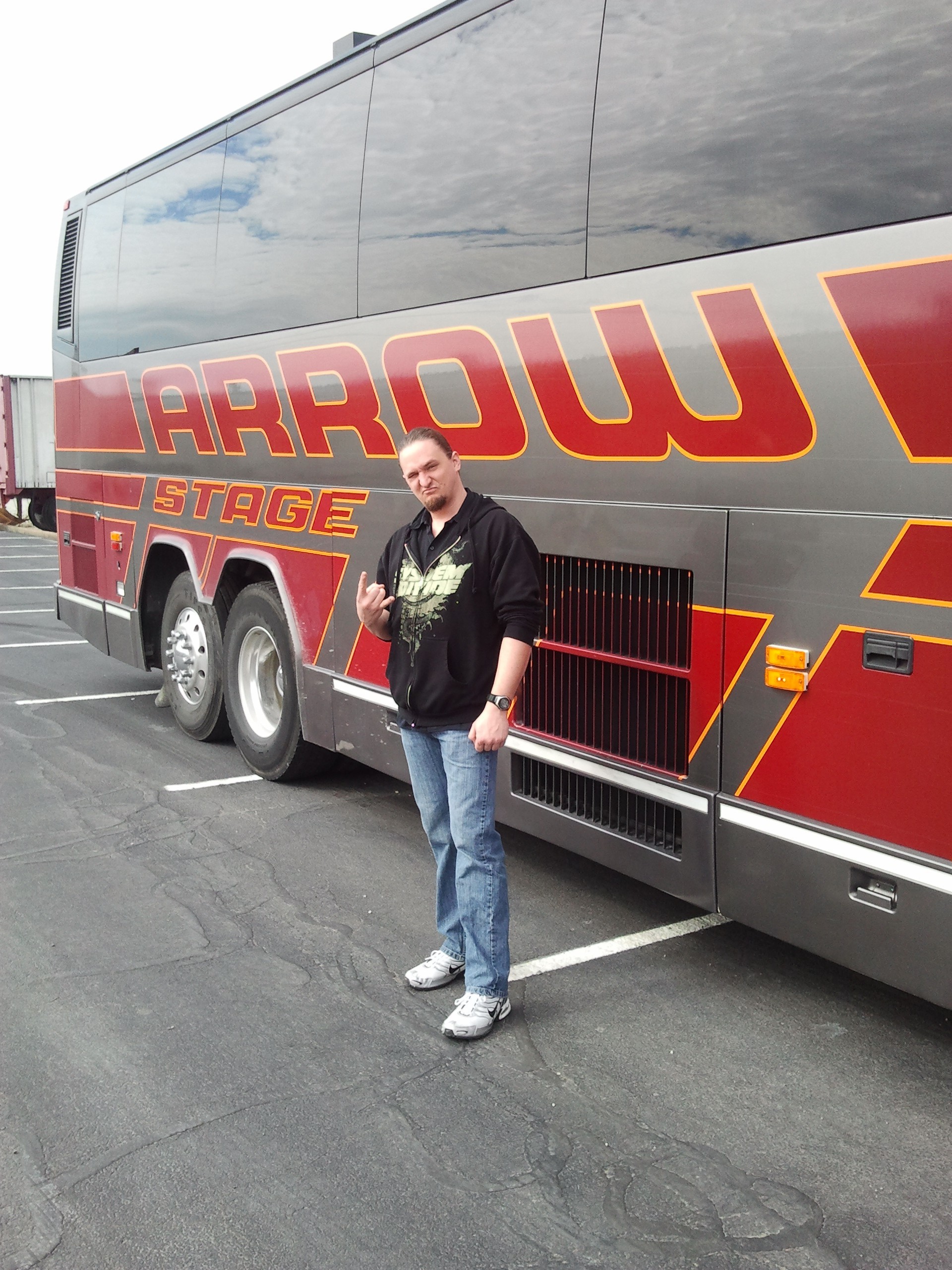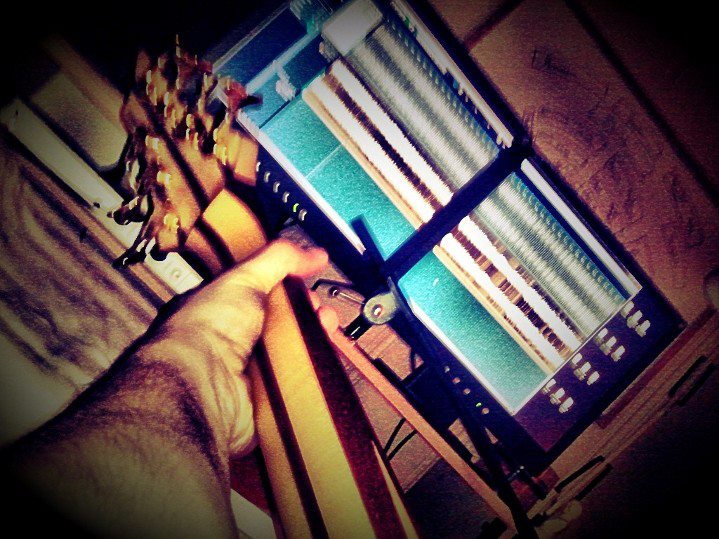![]()
I had heard about this movie called The Room a few years ago. It was becoming a word-of-mouth legend much like how some beautiful foreign film starts off in a small market and then balloons to national attention and gains Oscar buzz. Great movies find an audience. The Room was kind of like that…but it was the opposite of great. In fact, it’s probably one of the worst movies ever made. So why are so many people talking about it and why are people still passionate about it 10 years after its release? Well, the origins of the film and the whole calamitous process of making it are now chronicled in the book, “The Disaster Artist” by Greg Sestero and Tom Bissell.
I’d heard The Room mentioned on late night talk shows. I’d seen it written about in magazines. It began to get referenced in TV shows where the characters would say to each other, “I saw this awful film last night.” It was like this inside joke. What was the big deal with this movie?
Well, people were talking about it because of how unbelievably bad it was. Not the type of bad where the movie tries to be campy and stupid on purpose like, Zombie Women of Satan. Not the type of movie where the story is just boring and you forget about it a day later like in Twilight. I’m talking about an enjoyable type of bad. The Room is like The Rocky Horror Picture Show in its devoted fan following. People flock to these midnight  screenings and participate in some of the scenes’ inane details. They’ll throw plastic spoons at the screen when a character is by a table filled with picture frames that still have their stock photos of spoons in them. Whenever there is a scene that is out of focus because none of the other takes were good enough to use for the final product, people in the audience will yell “FOCUS.” Whenever a character on screen waves at the camera to tell the cameraman he’s ready (because he doesn’t know that they’re already filming – and it just so happens that that take was the only usable one filmed) people will wave back from the right side of the theater. People in the audience will count loudly to the number of times a character says, “but Johnny is my best friend” – it’s a lot.
screenings and participate in some of the scenes’ inane details. They’ll throw plastic spoons at the screen when a character is by a table filled with picture frames that still have their stock photos of spoons in them. Whenever there is a scene that is out of focus because none of the other takes were good enough to use for the final product, people in the audience will yell “FOCUS.” Whenever a character on screen waves at the camera to tell the cameraman he’s ready (because he doesn’t know that they’re already filming – and it just so happens that that take was the only usable one filmed) people will wave back from the right side of the theater. People in the audience will count loudly to the number of times a character says, “but Johnny is my best friend” – it’s a lot.
Check out the video below and how the audience loves to participate and yell out their favorite lines.
The first time I saw the room I had to keep fast forwarding the movie. I knew it was going to be bad. But I thought it was just going to be bad acting. I had no idea the level of bad I was getting myself into.
No. The film is LOADED with one awful device after another. There is not only one but three extended love scene that goes on for three uncomfortable minutes – all scored to some horrendous local R&B music. The acting is so bad that it seems like the actors had just learned their lines but weren’t aware of what any of the words actually meant. The story is all over the place: plot points are brought up at one moment and dropped the next, one character mentions she has breast cancer but then it’s never mentioned again. All the characters are incredibly inconsistent: one “psychologist” character describes a girl as being sweet and then a minute later the same guy describes her as a sociopath. And

Tommy Wiseau dubbed in all of his lines but didn’t bother matching the performance or the words exactly. There’s scene after scene of guys playing catch football while standing a mere two feet away from each other. The whole thing was just a wreck and made no sense. And I’m not one that enjoys a bad movie for the sake of it.
The ADR is the most annoying thing to me out of all this. ADR is “additional dialogue replacement” and is done when the sound in a scene is taken out and the dialogue has to be replaced. Let’s say your characters are outside and the traffic is very loud and the wind is blowing hard – you take out all the noise and replace everything with your own audio to clean it up. That being said, the actors have to re-record their lines in a studio. Some directors like ADR because it makes everything sound nice and smooth. Some directors don’t use it all because it’s hard to relive that moment in the recording studio.
Well, Tommy Wiseau re-recorded all of his dialogue because, I’m guessing, he didn’t like his accent (and maybe the sound guys didn’t know what they were doing). So he just re-recorded everything…with the same accent. My favorite example of this is the scene when Johnny is mad that his “future wife” (the word “fiance” is never used) claims he hit her. He goes to chill out on the roof to blow off some steam and is yelling at no one in particular. He then sees his buddy, Mark – which immediately calms him down. But the last time he says “I did not” you can tell that in the video take he yells the words but in the ADR he calmly says it.
 The movie is a beautiful disaster on a scale that may never be matched. And now, ten years after the movie premiered, we have a new book by one of the film’s main actors. Greg Sestero, that played Mark in the movie, wrote a tell-all book with Tom Bissell called “The Disaster Artist.” I gotta be honest, it’s one of the best things I’ve read in a long time.
The movie is a beautiful disaster on a scale that may never be matched. And now, ten years after the movie premiered, we have a new book by one of the film’s main actors. Greg Sestero, that played Mark in the movie, wrote a tell-all book with Tom Bissell called “The Disaster Artist.” I gotta be honest, it’s one of the best things I’ve read in a long time.
You know that cliche “I couldn’t put the book down.” Well, that was meant for books like this. To really appreciate the book you’ve have to have seen the movie. Sure, you can enjoy the book as a memoir of how a young kid that wants to be an actor glommed on to this eccentric rich guy (that might be the Zodiac Killer) and rides along side him as he also tries to fulfill his own dreams of becoming a huge movie star.
And I mean it when I say eccentric.
 There are two main people in this story: Greg Sestero, the good looking All American kid that wants to be a working actor; and then there’s Tommy Wiseau, a man who doesn’t say how old he is, what his real name is, where he’s from, why he always wears TWO belts, or how he amassed his vast fortune. Tommy also might be a vampire.
There are two main people in this story: Greg Sestero, the good looking All American kid that wants to be a working actor; and then there’s Tommy Wiseau, a man who doesn’t say how old he is, what his real name is, where he’s from, why he always wears TWO belts, or how he amassed his vast fortune. Tommy also might be a vampire.
The book is actually paced in a brilliant way. One chapter deals with the actual production of The Room and all the turmoil that went on while filming the actual movie. Then the next chapter deals with how it all began, i.e. how the two met and got to the point where they would start filming this cinematic miscarriage.
This type of chapter flip flop made you want to keep reading and reading. You’d be enjoying a story about the past and get to a part where Tommy does something insane. You’d finish that chapter saying to yourself, “what the fuck is up with this guy.” Then you’d cut to the future where they’re filming this movie and Tommy does something even more over the top. And each time you finish a chapter you can’t wait to get back to the previous timeline to find out more about how things were progressing and merging into each other.
It’s all done in such an interesting way. Like, Tommy claims to be from New Orleans by way of France (even though he speaks in an Eastern Bloc accent). So when Greg’s mother (who is French) approaches Tommy and speaks French to him she immediately discovers that there’s “no way this guy is French.” So where is he from?
His license says he’s in his mid-thirties. But if you look at his face you’ll know there’s no way this guy is in his thirties. Then someone that works in the department of records discovers, “uh, no, this guy was born way before that.” So how the fuck old is he?
When one character goes to the bank to take some money out of the account to pay for something the teller says, “oh, that account…that’s a never ending well of money.” Where is all this money coming from? Is he in the mob?
It’s just mystery after mystery.
This book chronicles the ultimate in perfect storms. Imagine reading a story about a socially inept man of mystery that immigrates to the United States with no money and wants to become a Hollywood star. He somehow finds a way to make a shit load of money and no one knows how he did it. He lies about his age. He lies about his name. He lies about where he came from. He doesn’t seem to have a job but he has an endless supply of cash. And now he wants to make a movie. Like every obstacle that’s stood before him, he’s figured out a way to bypass them and accomplish his goals. Unlike the mysteries of his past, this portion of his life has been witnessed and now we can read about how it was done. Everything falls into place; everything falls apart; everything is built back up; they fall apart again – and somehow and in some way a movie is made and gets a huge cult following.
It’s about a guy that crushes every obstacle before him. No, he doesn’t really crush the  obstacles…he figures out another way around them. It’s at one part amazing at how this guy can be so oblivious to what is around him and one part fascinating at the sheer determination one man can have to get his dream. It’s one guy’s epic adventure through life that is dumbfounding and inspirational at the same time. For all intents and purposes there is no way of reason that he should’ve accomplished what he set out to do, but he did.
obstacles…he figures out another way around them. It’s at one part amazing at how this guy can be so oblivious to what is around him and one part fascinating at the sheer determination one man can have to get his dream. It’s one guy’s epic adventure through life that is dumbfounding and inspirational at the same time. For all intents and purposes there is no way of reason that he should’ve accomplished what he set out to do, but he did.
So, by any means necessary, check out the movie The Room and then read “The Disaster Artist.”
I absolutely highly recommend doing both. I also want to add that the very last sentence in the book is one of my favorite final sentences in any book ever.



